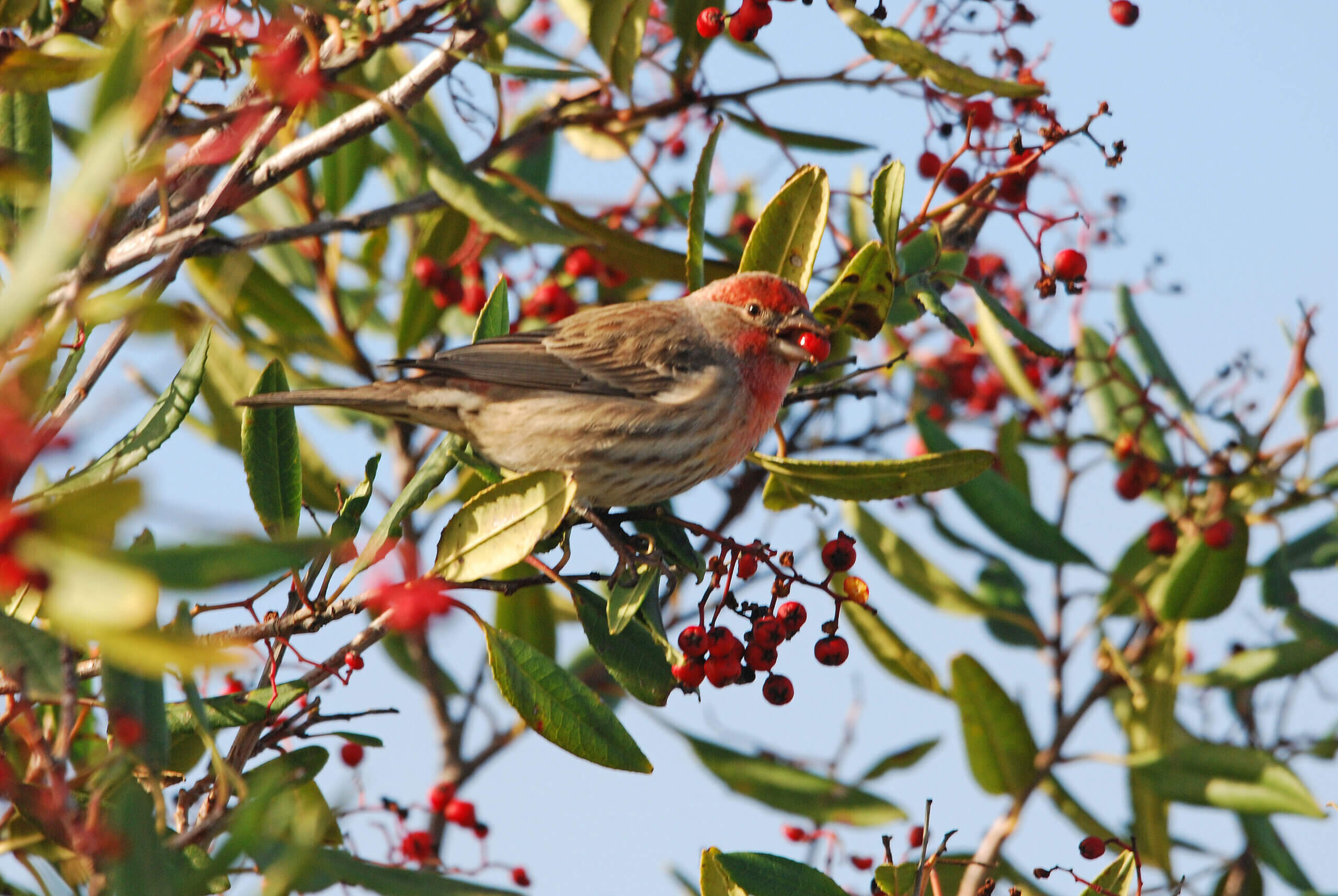I was lucky enough to be outside at just the right time about a week ago when I noticed a lot of activity around a Toyon – the most spectacular Toyon I’ve ever seen, and it lives on the top side of the meadow next to my house and garden. This Toyon (Heteromeles arbutifolia) is a tree, about 30 feet tall, with a trunk that looks to be about 7 to 9 inches in diameter. Several smaller Toyons that are more shrub-sized also grow close by.
The large clusters of bright red berries were the beacon that attracted a flock of Robins and Cedar Waxwings to come in for a feast! Many fruit-eating birds will join large multi-species flocks to better search out patchy resources like fruit-bearing plants. Robins are noisy and active feeders, while the Cedar Waxwings are more reserved; they forage and then they rest. While taking a break from berry-eating the flock of Waxwings were a beautiful sight, perched in a bare Blue Oak, pale yellow bellies a soft golden glow as they all faced directly into the morning sun.
Cedar Waxwings roam the whole of North America and are named for their fondness for juniper berries, in particular, the Eastern Redcedar. They are birds that show up ‘all of a sudden’ because they follow the fruiting cycles of various plants all over the country. The Waxwings generally move from north to south in the colder months, and the reverse as the weather warms. The Bohemian Waxwings roam as far north as Alaska in the summers, and rarely show up in California.
The ‘Waxwing’ refers to the flat red ‘waxy’ droplets that are exuded from the feather shaft and form at the ends of the secondary flight feathers on the adults. The coloration comes from carotenoid pigments that are found in fruits and cannot be synthesized by the birds directly, so they are sequestered in these droplets that start to form in the juveniles and increase with each basic molt. The Cedar Waxwings start to breed at about a year old, and choose mates of a similar age; the waxy droplets are a clear signal of compatible ages.
Male House Finches also sequester these same pigments in their feathers, and the brighter red their breasts, the more desirable they are as mates. Presumably the female judges a male to be a good provider for a brood by the brilliant red (or sometimes yellow) of their breast coloration.
Birds rarely rely on just one type of food, and though Waxwings rely on sugary fruits for most of the year, they also glean insects while eating fruits, and sally forth from a perch to catch insects on the wing. Their young are raised primarily on insects, as are almost all the songbirds, because insects provide the protein needed during this period of very rapid growth.
When the birds eat these small fruits we call berries, they are only eating the flesh, not the seeds contained within each fruit. Technically, every type of ‘fruit’ is a ripened ovary containing seeds; whether it is an apple or a tomato, a Toyon berry or a grape – or a capsule like those of a California poppy.
I love looking carefully at ALL the seedlings emerging during the rainy season and trying to ID them in their earliest stages. It is, of course, helpful to know which plants were growing and setting seeds close by, but lots of new plants also show up, moved in by wind, insects, birds, or many other creatures.


